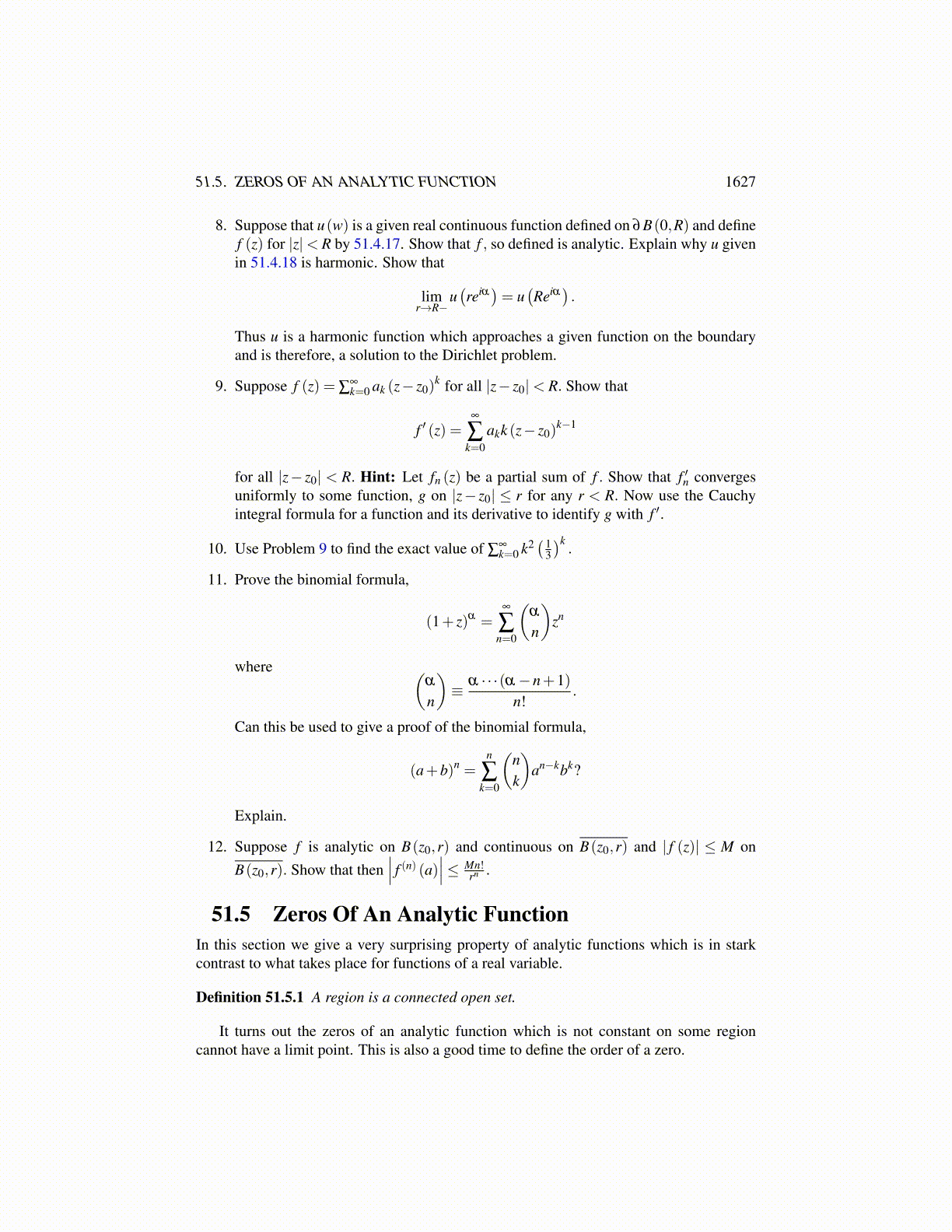
51.4. EXERCISES 1627
2. Abel’s theorem says that if ∑∞n=0 an (z−a)n has radius of convergence equal to 1 and
if A = ∑∞n=0 an, then limr→1−∑
∞n=0 anrn = A. Hint: Show
∞
∑k=0
akrk =∞
∑k=0
Ak
(rk− rk+1
)where Ak denotes the kth partial sum of ∑a j. Thus
∞
∑k=0
akrk =∞
∑k=m+1
Ak
(rk− rk+1
)+
m
∑k=0
Ak
(rk− rk+1
),
where |Ak−A|< ε for all k≥m. In the first sum, write Ak = A+ek and use Problem1. Use this theorem to verify that arctan(1) = ∑
∞k=0 (−1)k 1
2k+1 .
3. Find the integrals using the Cauchy integral formula.
(a)∫
γsinzz−i dz where γ (t) = 2eit : t ∈ [0,2π] .
(b)∫
γ1
z−a dz where γ (t) = a+ reit : t ∈ [0,2π]
(c)∫
γcoszz2 dz where γ (t) = eit : t ∈ [0,2π]
(d)∫
γ
log(z)zn dz where γ (t) = 1 + 1
2 eit : t ∈ [0,2π] and n = 0,1,2. In this prob-lem, log(z) ≡ ln |z|+ iarg(z) where arg(z) ∈ (−π,π) and z = |z|eiarg(z). Thuselog(z) = z and log(z)′ = 1
z .
4. Let γ (t) = 4eit : t ∈ [0,2π] and find∫
γz2+4
z(z2+1)dz.
5. Suppose f (z) = ∑∞n=0 anzn for all |z|< R. Show that then
12π
∫ 2π
0
∣∣∣ f (reiθ)∣∣∣2 dθ =
∞
∑n=0|an|2 r2n
for all r ∈ [0,R). Hint: Let
fn (z)≡n
∑k=0
akzk,
show1
2π
∫ 2π
0
∣∣∣ fn
(reiθ)∣∣∣2 dθ =
n
∑k=0|ak|2 r2k
and then take limits as n→ ∞ using uniform convergence.
6. The Cauchy integral formula, marvelous as it is, can actually be improved upon. TheCauchy integral formula involves representing f by the values of f on the boundaryof the disk, B(a,r) . It is possible to represent f by using only the values of Re f onthe boundary. This leads to the Schwarz formula . Supply the details in the followingoutline.